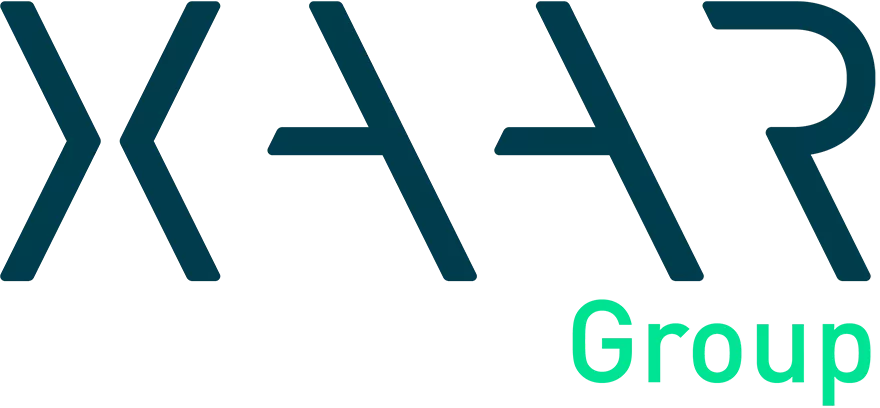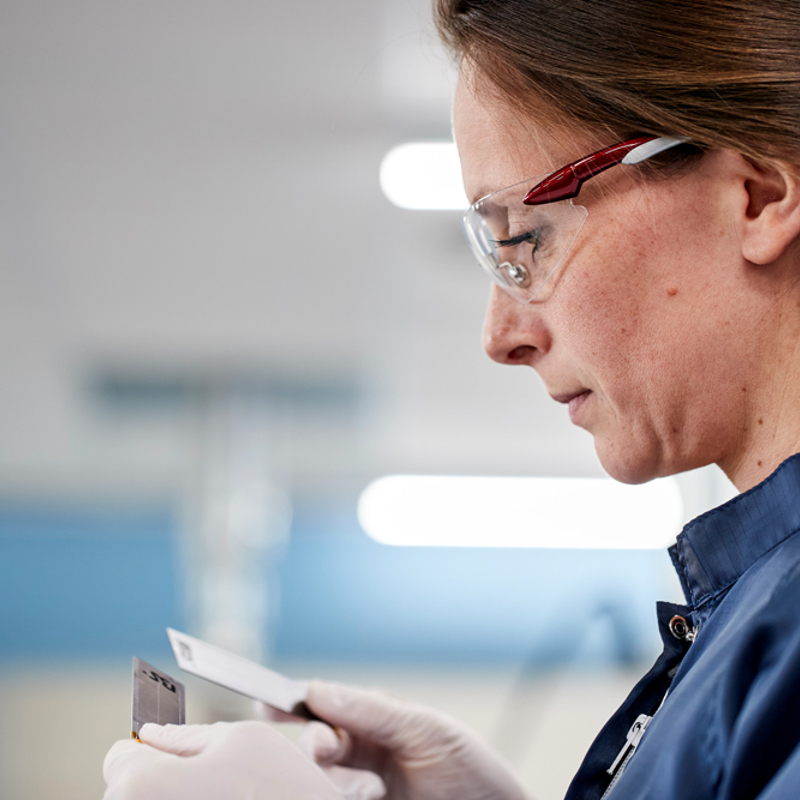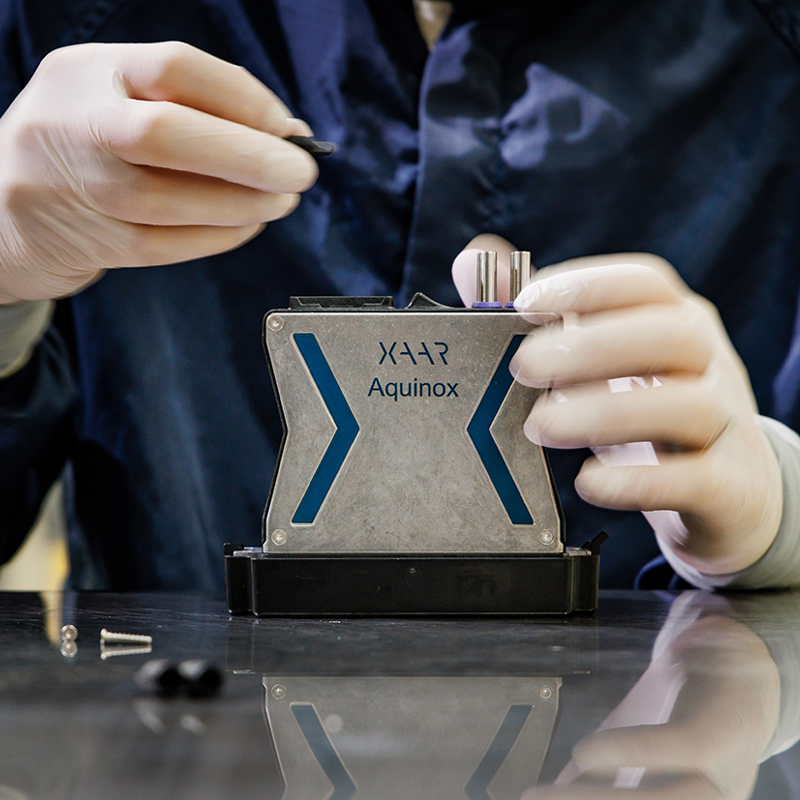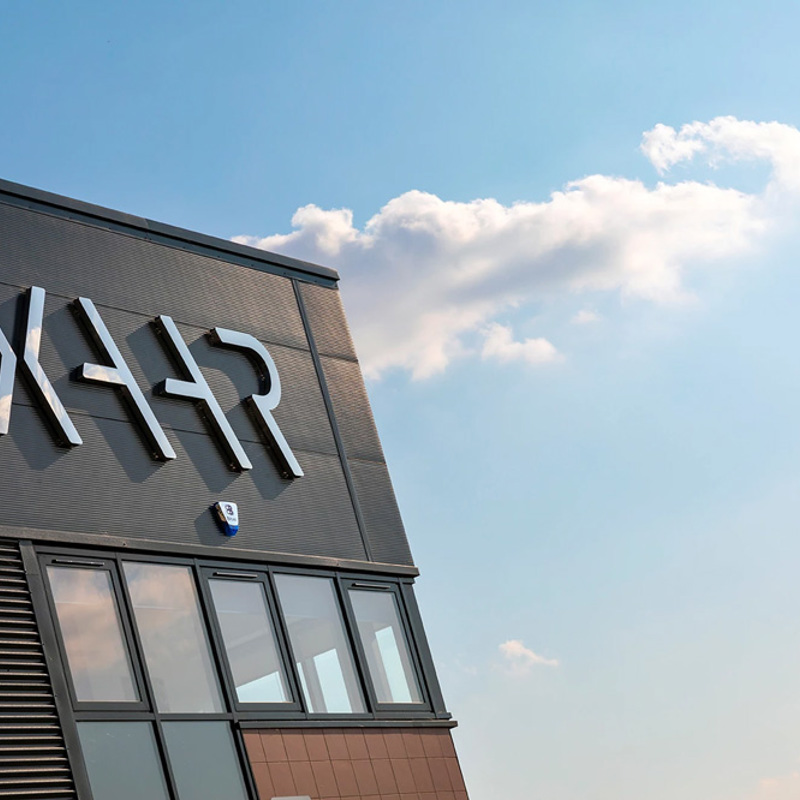Strategy update 2024
Strategic Update
Over the last five years our investment in R&D through our printhead development platform "ImagineX", has successfully transitioned the Group from predominantly being a printhead supplier to the ceramics market, to now providing market-leading technology to OEMs across several markets. This will grow company revenue beyond historic levels in the medium-term at a far lower risk level. With a focus on new product launches, we have developed a more resilient product portfolio with applications and avenues for growth in a diverse range of end-use markets. This provides a stable foundation going forward and with the decline in the ceramics market largely behind us, allows us to concentrate on the accelerated uptake of our technology in markets that have substantial long term and repeat revenue potential. The portfolio going forward has much more diversity in end markets and customers than it has ever had. The unique capability of our technology differentiates us from our competitors, allowing first-mover advantage in areas such as EV battery coating, automotive coating and desktop 3D printing.
EV Battery Coating opportunity
The problem we solve: With the requirement for ever bigger and more powerful batteries, there is a corresponding increase in the amount of heat generated by these batteries. The current dominant technology used to wrap batteries is based on the use of plastic film which is increasingly no longer fit for purpose as it is not always able to withstand the higher temperatures, causing safety concerns. The existing alternative, which mitigates the safety issue, utilises spray painting. However, this requires a paint recovery system as some 40% of paint is lost in the process, generating costs that are unappealing to battery manufacturers.
The Xaar solution: Through the utilisation of Xaar inkjet technology, as opposed to plastic film, inkjet coated EV batteries can withstand far greater levels of heat, addressing safety concerns. With 99% yield efficiency, our technology generates minimal waste, making it significantly more cost-effective than spray painting.
The maturity of the opportunity: In July 2024, we launched two new printheads, the Xaar eX and Nitrox eX, specifically designed for coating the new generation of batteries used in EVs and energy storage systems. Through the eX printhead, Xaar became the first inkjet company to enter the battery sector with a printhead specifically for this application, with substantial yield, cost and environmental benefits. Only our printheads can print a coating solution that meets the necessary safety tests. We have worked with Shifang, a leader in EV battery production automation, and Omijia Intelligent Technology, to develop their own coating lines.
During 2024, these companies became the first to launch inkjet EV battery coating machines and both have received initial orders so their customers can test out the capabilities of our technology. These customers have signalled their intent to order additional machines in the near term, with an expectation of scaling their orders up markedly as confidence in inkjet coating technology grows.
The market potential: The market uptake of our technology could be substantial and we are currently the only provider. To scale the market opportunity, there are an estimated 1,300 EV battery production lines globally. 100% conversion of this market could generate £260 million of initial revenue with an estimate printhead replacement cycle of two years.
Automotive Coating opportunity
The problem we solve: Within the automotive coating market, there are two distinct problems. Firstly, if manufacturers wish to utilise multiple colours, such as painting roofs black, after the first colour is applied, the car is taken off the production line, masked and sprayed in the second colour. Spraying the car twice is not only inefficient, but with roughly 40% of paint lost when spray painting, it is costly in terms of both materials and energy. The result of this is that paint shops are currently the major bottleneck in car manufacturing plants; end customers and the OEMs, are seeking out a solution.
Secondly, if the individual customer wishes to customise their cars, adhesive decals are typically used. Decals applied this way are susceptible to jet wash damage, which has historically limited their wider appeal. Existing inkjet solutions for car decoration also face several challenges, including 'sagging' on sloped or vertical surfaces.
The drawbacks set out above have limited the uptake of incremental coatings to vehicles.
The Xaar solution: In terms of the two-tone vehicle market, Xaar inkjet technology is significantly more efficient than spray painting as it eliminates the need for masking and reduces energy and paint requirements. Our partner Axalta, a global leader in the sector, recently launched the Axalta NextJet™. This next generation, sustainable digital painting machine for the automotive industry, utilises our recirculating TF Technology, keeping the fluid in constant motion, and by doing so, improving paint shop reliability.
This award-winning digital paint coating technology eliminates masking and reduces labour, increasing productivity and efficiency rates. Axalta has already reported that this can contribute to a 30% reduction in CO2 emissions and significant cost savings for vehicle OEMs who use two-tone.
Xaar technology also provides a high-quality solution to the drawbacks of adhesive decals. With the ability to precisely jet lower volumes, our printheads are leading the way in replacing poorly performing inkjets or adhesive based decals with no 'sagging' and no risk of damage by jet washing.
The maturity of the opportunity: Axalta has recently agreed a partnership with Dürr, whose machines currently paint 50% of cars globally, to provide a digital paint solution, combining Axalta's NextJet™ technology with Dürr's robotics integration. Dürr are currently demonstrating their machines to potential customers, and we anticipate a select few customers to be chosen as market partners during 2025.
The market potential: Through our partnership with Axalta, this market presents a significant opportunity for Xaar, and we anticipate that our technology will expand demand for customised detailing of vehicles over and above that from using decals and more traditional two-tone painting.
Xaar will receive revenue based on the number of cars painted. Currently c.1% of the 90 million cars produced globally have decals or two-tone paint. As the current sole provider of this technology, we have the potential to take 100% of the market. For every 1% of the global car market, or 900,000 cars annually that are painted using our technology, we would generate significant revenue and profit for Xaar before factoring in any market growth.
Desktop 3D Printing opportunity
The problem we solve: Within the desktop 3D printing market there is currently an absence of a low- cost, high-quality product. The retail cost of the nearest competitor machine, of equivalent quality, is roughly £40,000, meaning usage is restricted to real enthusiasts who are willing to pay for a premium product. Currently those unwilling to pay so much for a printer resort to single nozzle, monochrome, 3D printers. The price point of these machines varies between a few hundred pounds to over £5,000. As a result, large-scale customer growth in the market is severely limited.
The Xaar solution: Our technology provides the ability to jet high viscosity fluid at relatively low cost. This has enabled the world's first full colour high resolution desktop 3D printer aimed at the consumer market. By utilising Xaar technology, cost as a barrier to high-quality printing, has been substantially reduced for customers.
The maturity of the opportunity: Flashforge, a major global supplier of desktop 3D systems, launched their full colour inkjet machines with Xaar printheads at the Formnext tradeshow in November 2024, priced at c.£2,400. In the short-term, Flashforge are launching a product promotion campaign alongside opening the pre-order book and they anticipate sending out the first orders in the second half the year. We are already engaged in development projects with other major global suppliers in the 3D wax market and anticipate further OEM product launches later in 2025.
The market potential: Over one million desktop printers are currently sold annually. Conversion of just 1% of that market to Xaar technology will generate multi-million-pound printhead revenue. As the machines have been designed for printheads to be regularly replaced, we anticipate recurring future revenue streams from each unit sold.
As the cost of purchasing a high-quality desktop 3D printer falls over the medium term, we would expect demand to grow, increasing the revenue potential for Xaar considerably.
Summary of the key future revenue drivers
Overall, these three markets each represent revenue opportunities of a magnitude greater than the ceramics market, illustrating the process of de-risking our business model over a relatively short period of time. Crucially, in all these markets, there are now fully operational machines using our printheads.
Other Market opportunities
Textiles and Corrugates: Even in established markets like textiles and corrugates there are significant opportunities for revenue growth. The Aquinox printhead, and its embedded ink recirculation technology, enables the reliable use of high-density water-based fluids, allowing for the delivery of very high volumes of pigment in a single pass, with additional benefits to quality and consistency. In collaboration with our ink partners, we have developed sector specific high viscosity aqueous inks for use in conjunction with the Aquinox printhead, thereby overcoming one of the fundamental barriers to the adoption and growth of inkjet technology within these sectors.
M&R, a market leader in textiles, launched its latest product, powered by Xaar's Aquinox printhead, in September 2024. Our technology enables consistently clean, high-quality prints while printing on a wide range of garments. The potential market size for this application is roughly £20 million per annum and we anticipate taking significant market share in the medium term.
Wax: In April 2024, Flashforge (also a market leader within the wax printing market) launched their first product using a single Xaar printhead and pre-orders are now being taken for their three-headed wax machine, Waxjet 530. With the wax market being of a similar scale to the textiles market, and the expectation that our technology will ultimately take a majority share, the opportunity is substantial.
Finally, unlike in ceramics where repeat sales take longer to occur, the printheads in each of our target markets need to be replaced regularly, making revenue more recurring and highly attractive and earnings of a higher quality. While adoption of Xaar printheads within the EV battery coating, automotive coating and desktop 3D markets will be key to the future prospects of the Group, other markets will continue to generate meaningful revenue. This includes the ceramics market where we continue to work with market leaders to develop new products to ensure we are well positioned to generate increasing revenue when market conditions allow. It is these existing markets which will benefit from our ability to offer a complete turnkey solution, and we expect this to further drive demand for our printheads as the barriers to adoption reduce.
Enhanced go-to-market strategy
The problem: The capability of OEMs to integrate our printheads into their existing print machines varies materially. The time taken can be considerable with clients, on occasion, withdrawing from the development process due to the apparent complexity of the process.
The Xaar solution: We have evolved our strategy to work more closely with customers to lessen some of the unique challenges posed by working with high viscosity fluids. Part of this strategy has been to develop, supply and integrate a complete turnkey solution of ink system, ink, waveform and all the other parameters associated with a complete product. This solution can then be provided to other customers within that market, leveraging the initial investment made.
The critical advantage of the provision of a turnkey solution is a significantly reduced timeline from point of engagement to a Xaar embedded solution being fully operational and available for customers to purchase. This has significant benefits to both revenue and customer relationships.
The maturity of the action: In August 2024, M&R took part in the first project to build a complete turnkey solution in an effort to reduce the time to market of a new machine utilising Xaar technology. We provided them with a functioning system which could easily be attached to their material handling system, significantly reducing potential integration issues. The product launched in early September after just six months, whereas previously it would have typically taken three years.
Since then, we have undertaken a second project in collaboration with another OEM which, while still ongoing, is delivering promising results. This approach, along with improving the depth of relationships with OEMs, enables us to develop market ready solutions that we can sell to the wider market, leveraging the initial investment.
The market potential: Although the provision of a complete turnkey solution is not appropriate to all our markets segments, it is relevant in the textiles, Direct to Shape (DTS) and labels embellishment markets. Although a turnkey solution does not expand the market itself, it improves our ability to grow market share and the timeliness of that revenue. Now we have created a solution for the textiles market, we hope to replicate this approach in other markets in the future.
The provision of a turnkey solution does have a cost, but we are of the firm belief that it is an extremely good use of capital, with returns well in excess of the cost of capital.
Operations
During the year we closed the print systems site in Hemel Hempstead and moved manufacturing to Huntingdon as part of ongoing efforts to streamline operations and reduce overheads. All printhead and print system manufacturing is now undertaken at Huntington, with ink systems produced in Kettering and the majority of R&D undertaken in Waterbeach.
After a shop floor re-organisation in 2023, the Huntington facility has the capacity to deliver over twice the current output, providing us with the ability to ramp-up output without incurring significant capital expenditure. As volumes increase, so will cost recovery per unit with the resultant benefit to margins.
At head office entity level we made significant savings, largely due to the completion of a business restructuring plan at the end of 2023 which reduced employment costs in 2024.
Disciplined cash management remains a priority, with a focus on improving product cost and manufacturing process efficiencies on a day-to-day basis rather than as part of specific large-scale initiatives.
FFEI
During 2024 we completed the disposal of the Life Sciences part of the business and moved print systems manufacturing from Hemel Hempstead to Huntingdon. Going forward FFEI products will be sold under the Xaar brand. FFEI printbars continue to play an important role in our strategy as they further facilitate the use of our technology into OEM machines. Challenges when integrating our printheads into third party printbars have historically caused product delays. By developing printbars and printheads together, we can provide a solution without such issues arising. This makes it easier for OEMs to utilise our technology, ultimately allowing us to sell more printheads.
Megnajet
As with FFEI printbars, Megnajet ink systems continue to help facilitate the integration of Xaar printheads into OEM machines. In 2024 we have increased our focus on Group projects. Several new product launches, including OmniFlo, are key to exploiting Xaar's High Viscosity and High Pigment capability and enhancing offerings into target markets such as textile and advanced/additive applications.
Engineered Print Systems
EPS remains largely separate to the rest of our business with a distinct strategy and business model as it utilises both Xaar and competitor printheads. Amidst a difficult market backdrop, we have taken steps to strengthen the leadership of this business to focus on a return to growth. Going forward, while we anticipate volatility in costs and market pricing as expected tariffs take effect, our focus will be on strengthening the customer pipeline while optimising the supply chain to reduce the effects of higher input costs. Because of the terms of the deals we negotiate, upon closure, revenue is generated over the next twelve to twenty-four months, based on project percentage of completion. Hence our focus on strengthening the pipeline and conversion will only provide returns in future periods rather than 2025.
